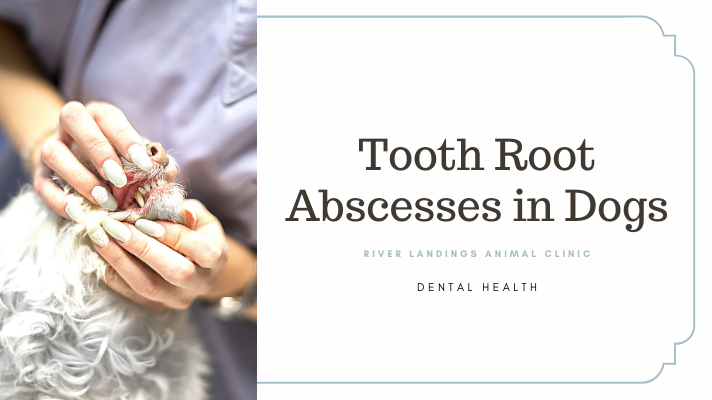Tooth root abscesses are infections that occur around the tooth root. They most commonly develop in the upper fourth premolar tooth, also known as the carnassial tooth. Once the infection develops around the root and between the skull bone, it is difficult for the body to fight infection in this location. As the infection builds, it often creates a draining tract through the skin on the cheek or below the eye. The skin is the weakest on this portion of the body in this area.
A classic sign of a tooth root abscess on physical examination is a swelling or draining wound beneath the eye that can break open and drain. The swelling can often be the size of a golf ball. When left alone, the opening can sometimes close and reopen as the pocket of infection reaccumulates.
Tooth root abscesses can occur in dogs of any age or sex. Most dogs improve in 48 to 72 hours with appropriate early treatment of the condition.
What to Watch For
Signs of tooth root abscessation usually occur suddenly and include:
Swelling of tissues below the eye or on the cheek
Pain upon opening the mouth
Not eating (due to pain) or reluctance to chew hard food
Crying when chewing
Lymph node enlargement
Lethargy
Fever
Diagnosis of Tooth Root Abscesses in Dogs
A thorough exam is performed including the evaluation of the face including the eyes, nose, and mouth. Attempts may be made to examine the mouth, but this may be too painful for your pet and may have to be performed under sedation. Often, a physical examination is all that is needed to diagnose tooth root abscessation. In some cases, additional diagnostics may be required and may include:
Complete blood count
Biochemical profile
Urinalysis
X-rays of the mouth and teeth
Treatment of Tooth Root Abscesses in Dogs
Treatment is aimed at eliminating the infection and treating the underlying dental problem. In mild cases, antibiotics and pain medications are usually started both orally, however definitive treatment includes a dental cleaning and care of the infected tooth which may include extraction or endodontic treatment (total pulpectomy and root canal filling). Endodontic treatment is generally treated in multiple appointments. Most dogs respond to treatment and improve in 48 to 72 hours.
If the signs are severe or worsen, dental cleaning and care may be treated as an emergency and performed within 24 to 72 hours following diagnosis. General anesthesia is needed for this procedure.
Common prescriptions may include:
Carprofen is commonly given for relief of pain and inflammation. This is a non-steroidal anti-inflammatory medication. Do not administer this medication with steroids. This medication may have gastrointestinal side effects so please do not administer this medication if your dog is vomiting, having diarrhea, or refusing food.
A variety of antibiotics may be prescribed. One commonly prescribed antibiotic for oral infections is Clindamycin which is generally given twice daily.
Do not give human pain medications to animals at any time without the approval of your veterinarian.
Home Care and Prevention for Canine Tooth Root Abscess
If your dog is painful and has a draining wound from the face, a veterinary examination is recommended immediately. Once a dental abscess is diagnosed and treatment has been started, all medications must be continued at home exactly as prescribed. Such medications may include topical antibiotics or local wound care, oral antibiotics, and oral pain medications.
Your veterinarian may also ask you to apply warm, wet compresses to the wound three to four times per day for several days to reduce swelling and encourage drainage. Offer soft foods to help your pet eat until the swelling and pain have diminished.
To reduce the risk of tooth root abscessation discuss the best dental care plan for your dog with your veterinarian. Daily tooth brushing and periodic dental cleaning may be the best prevention strategy.
Hear From Us Again
Don't forget to subscribe to our email newsletter for more recipes, articles, and clinic updates delivered straight to your e-mail inbox.

